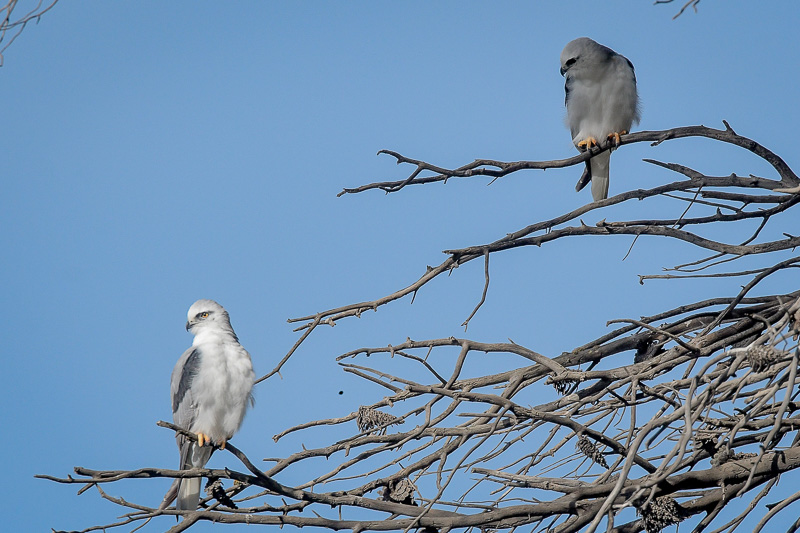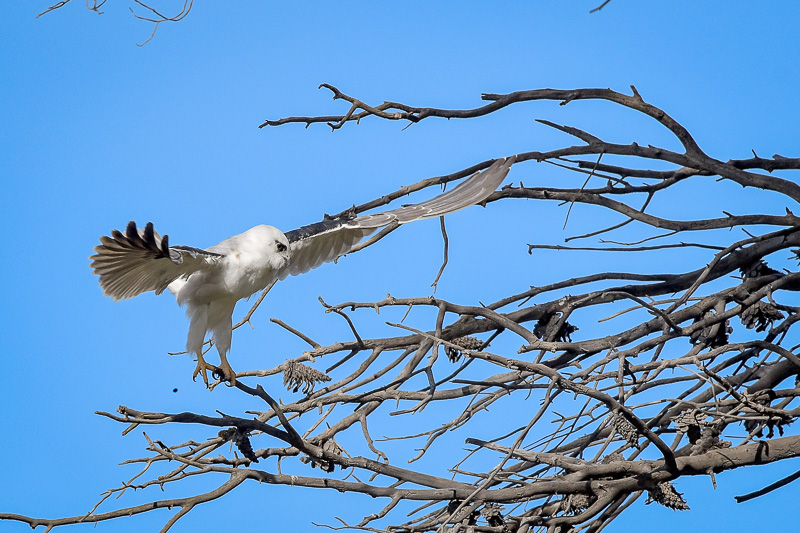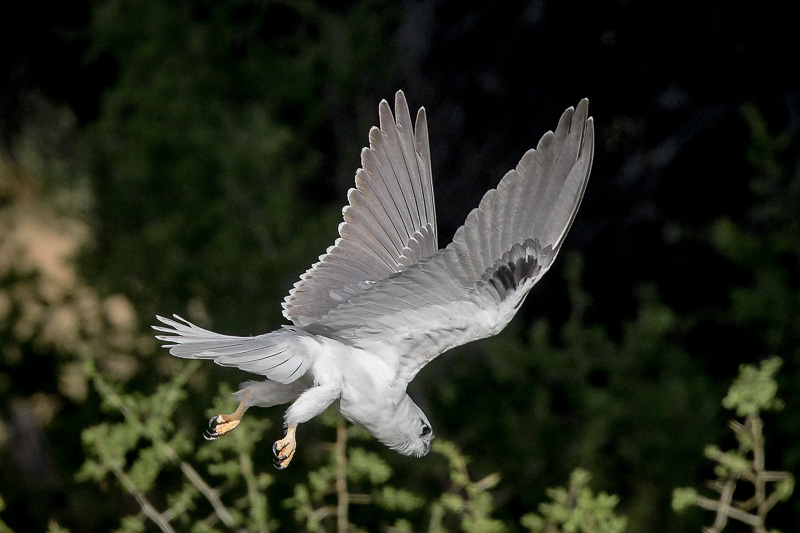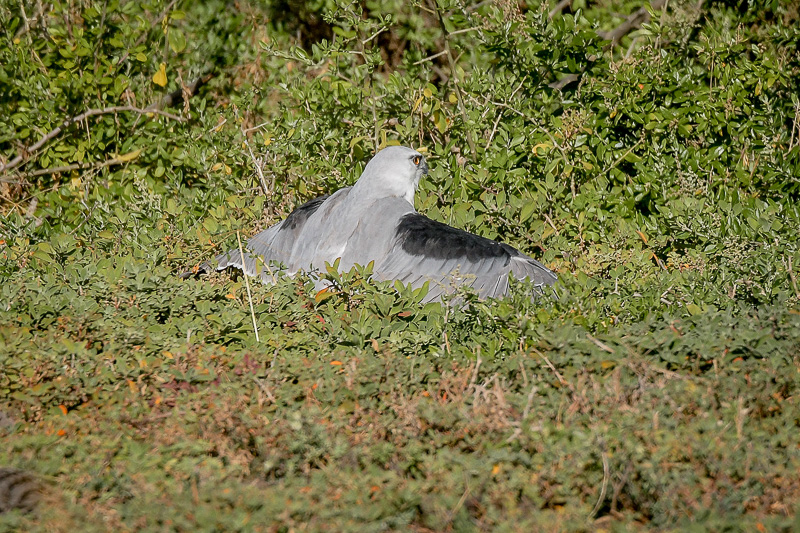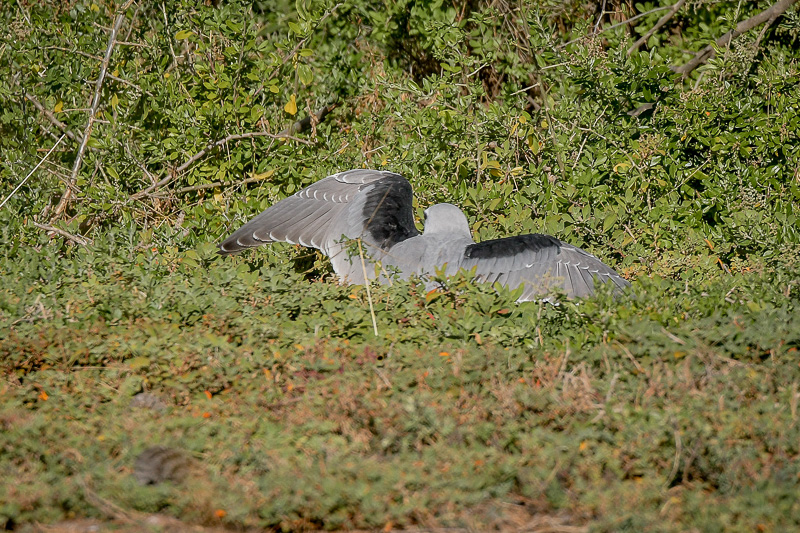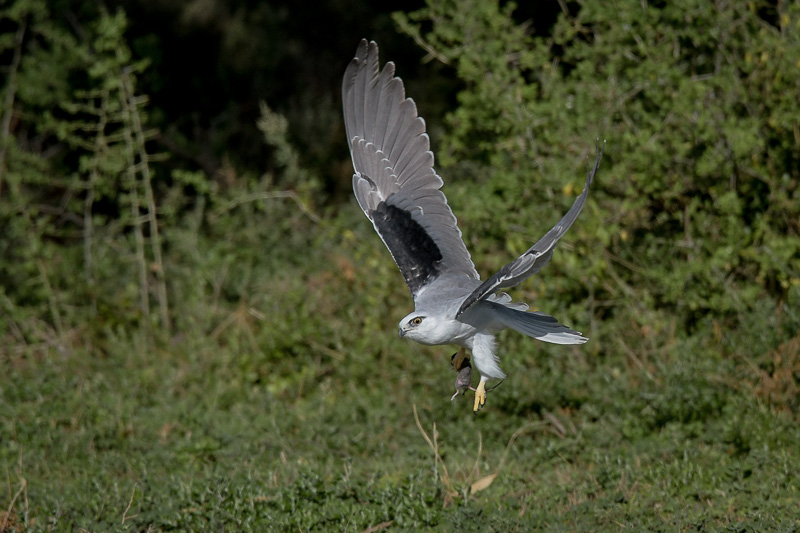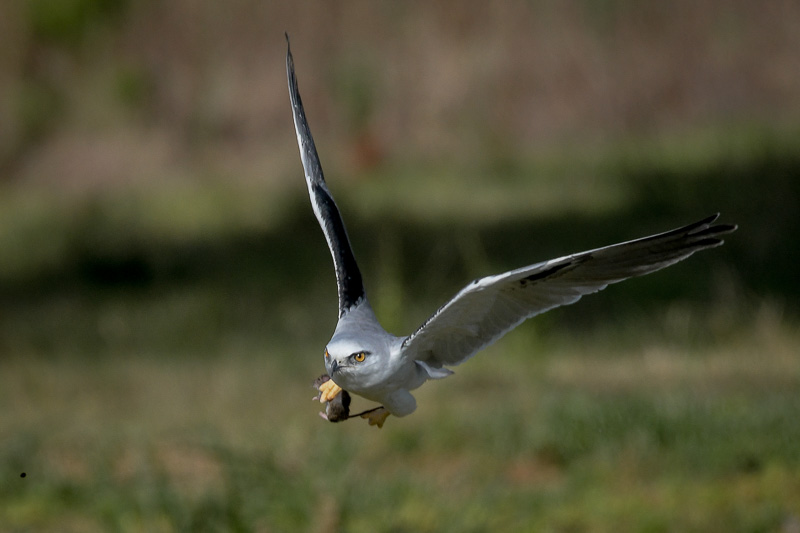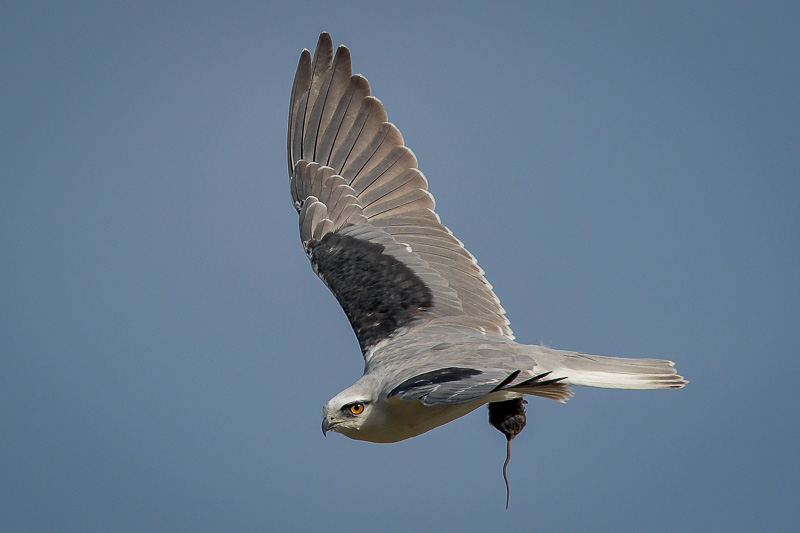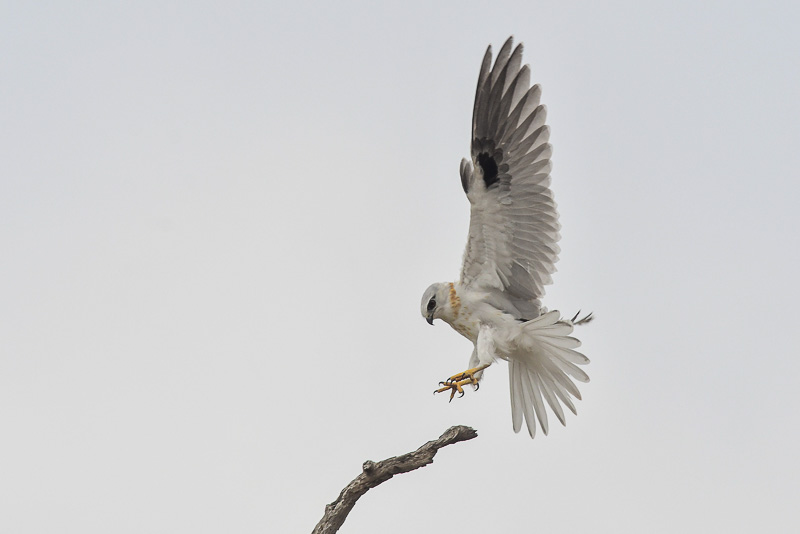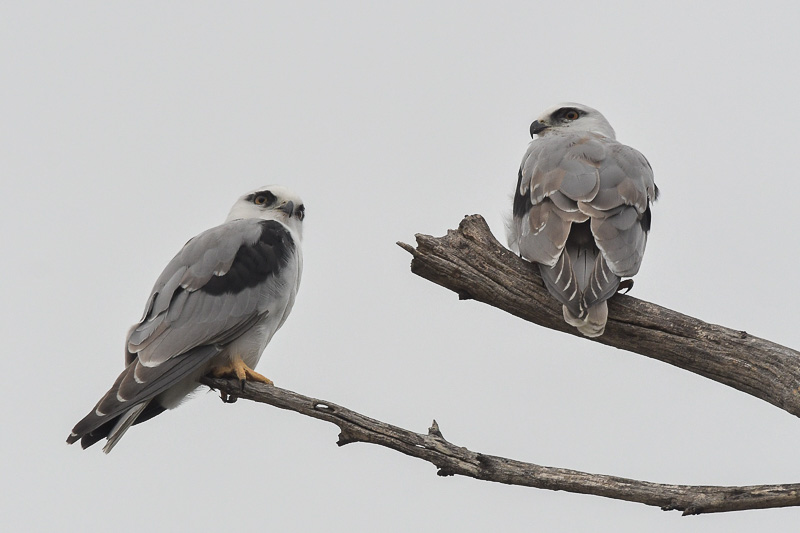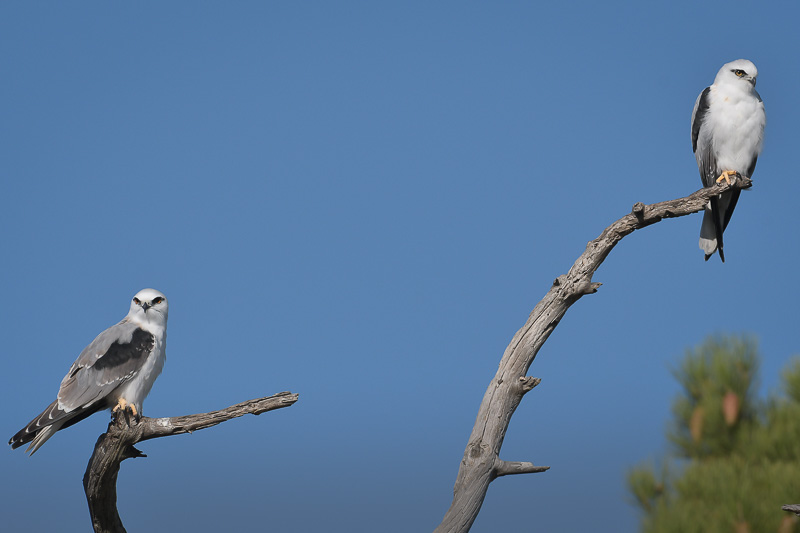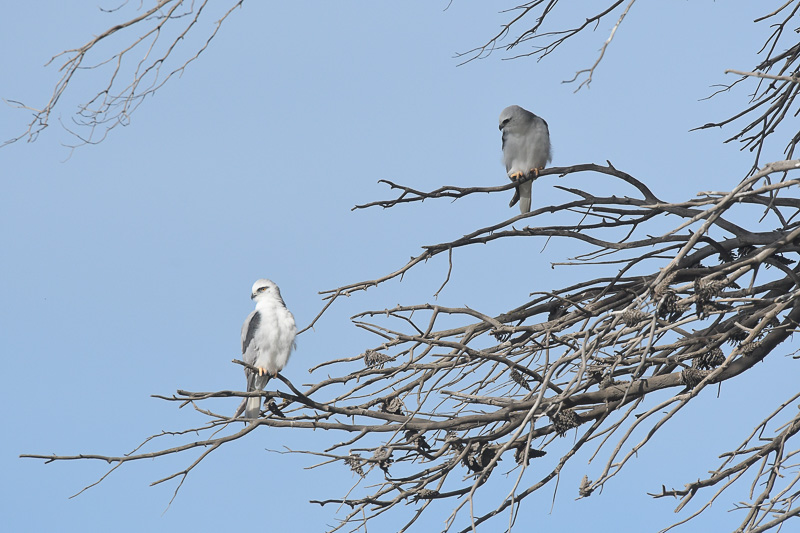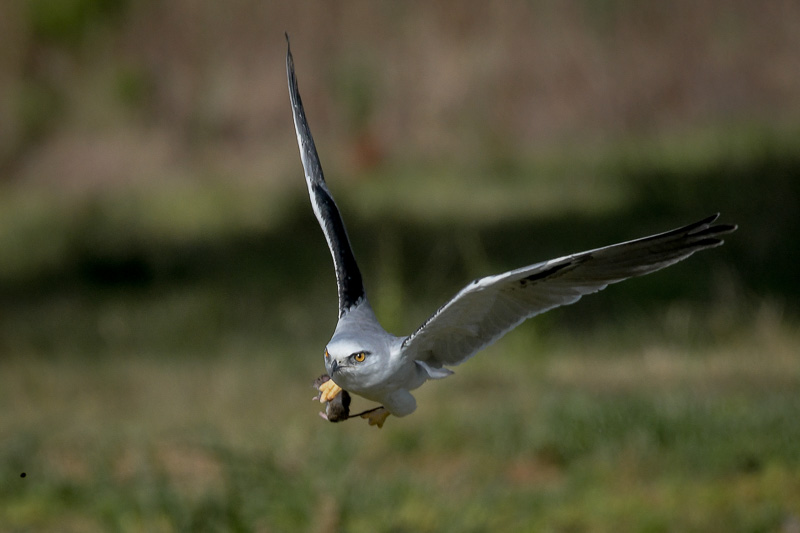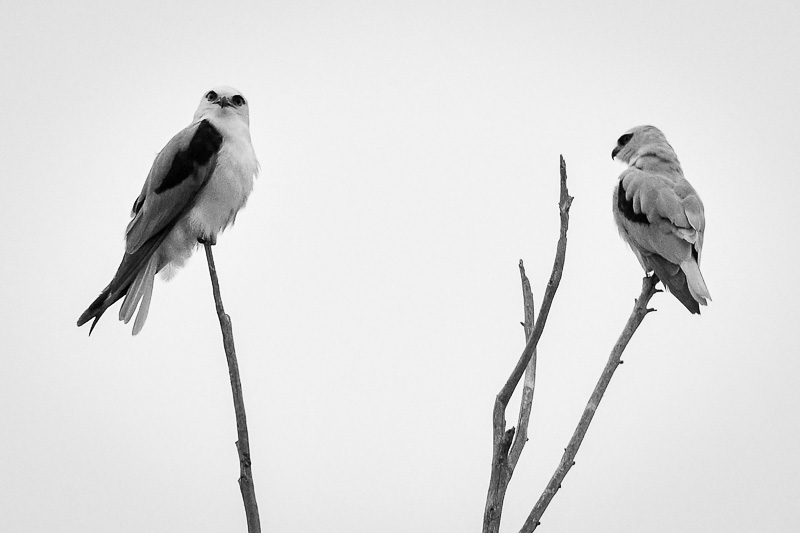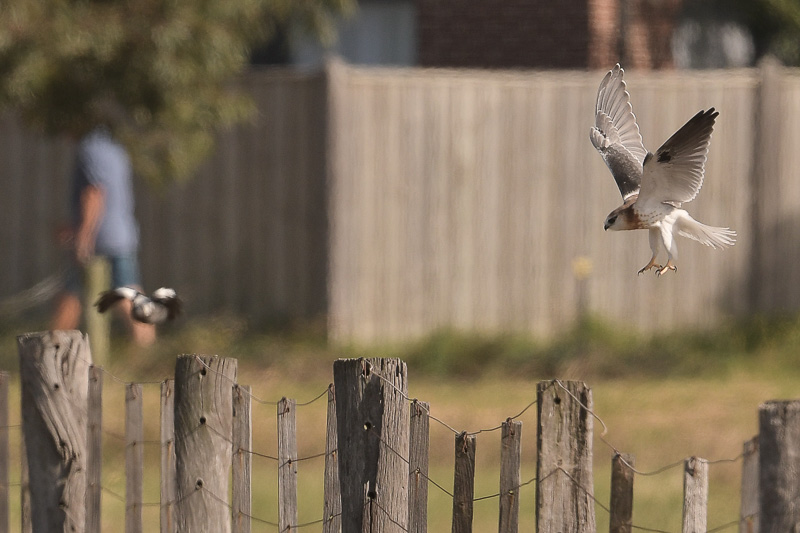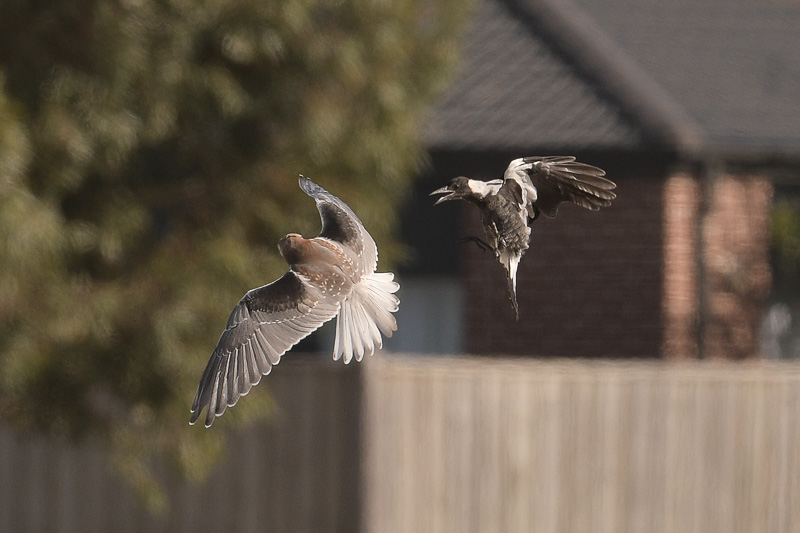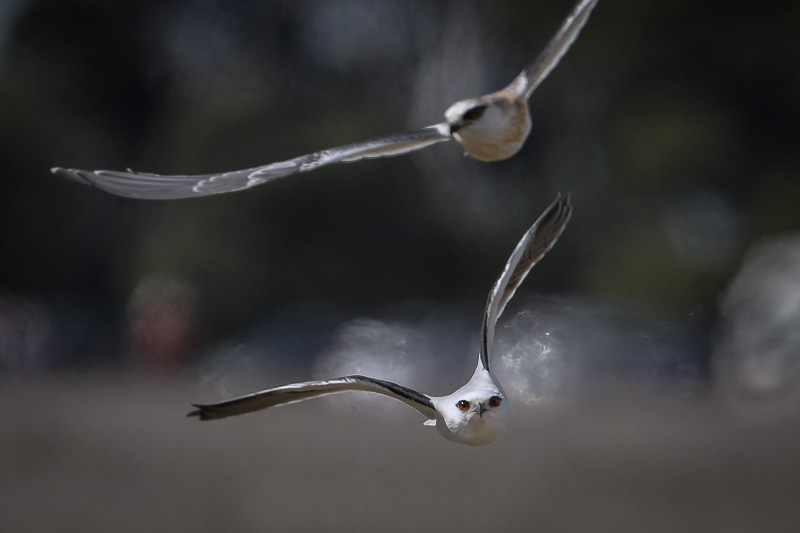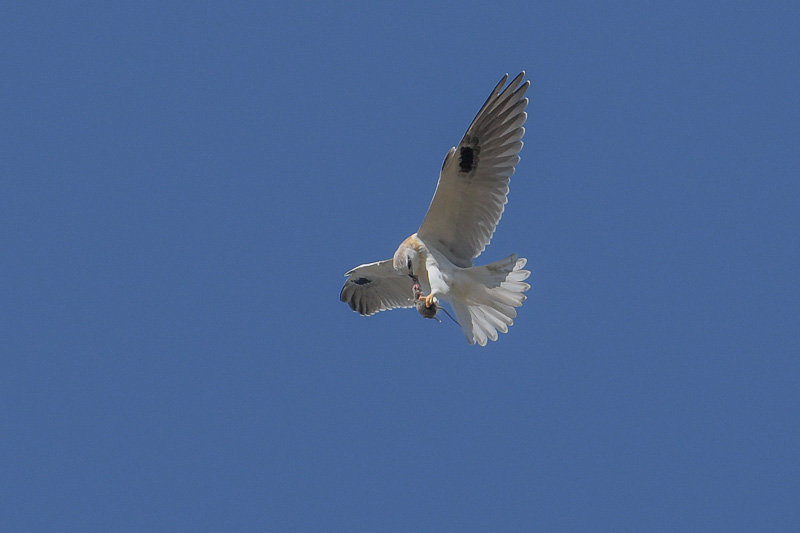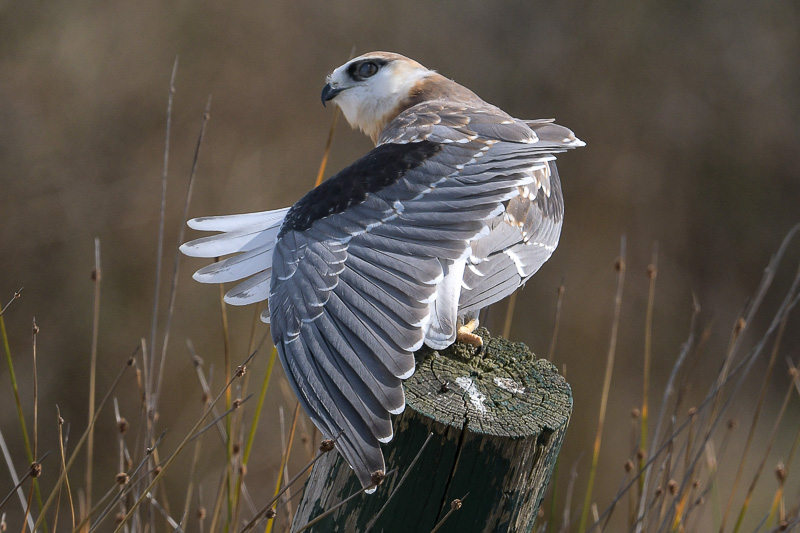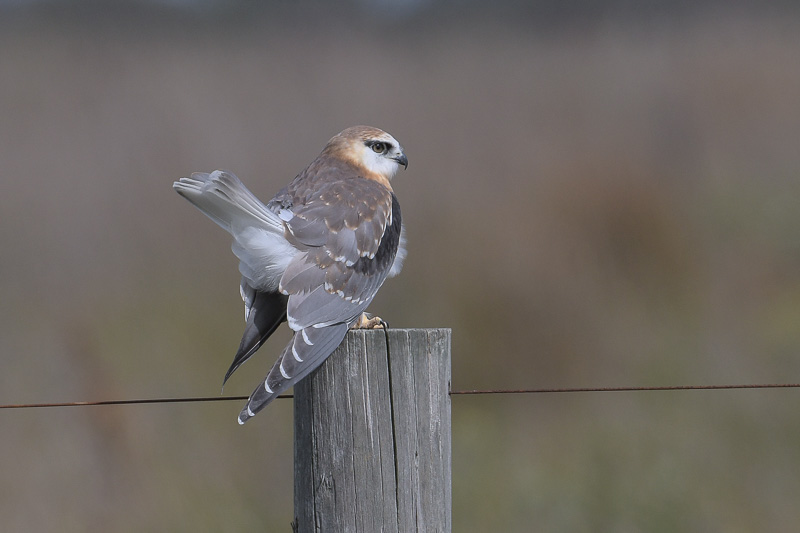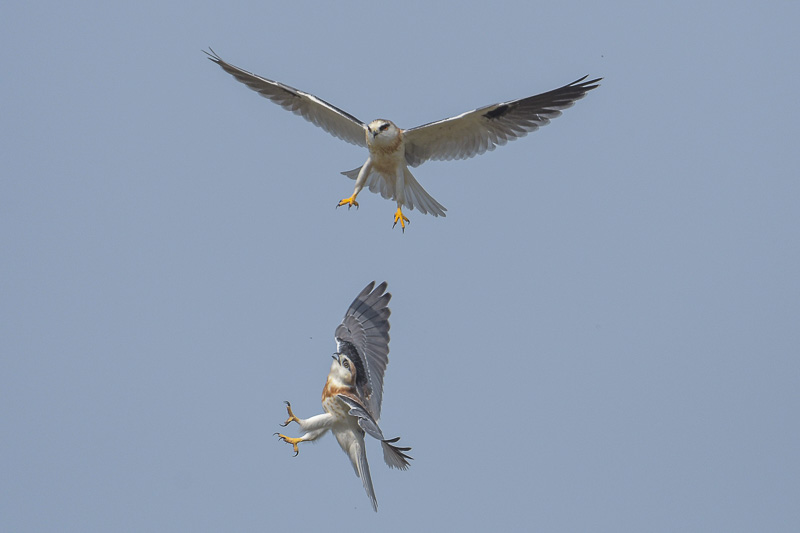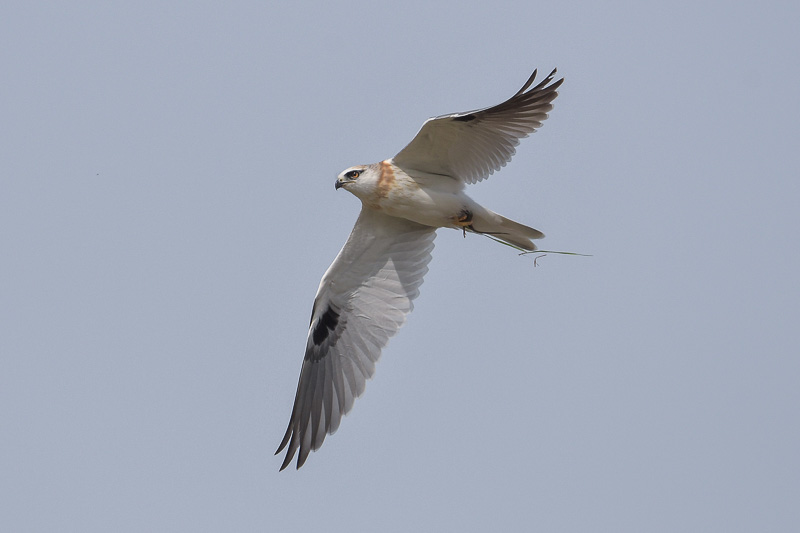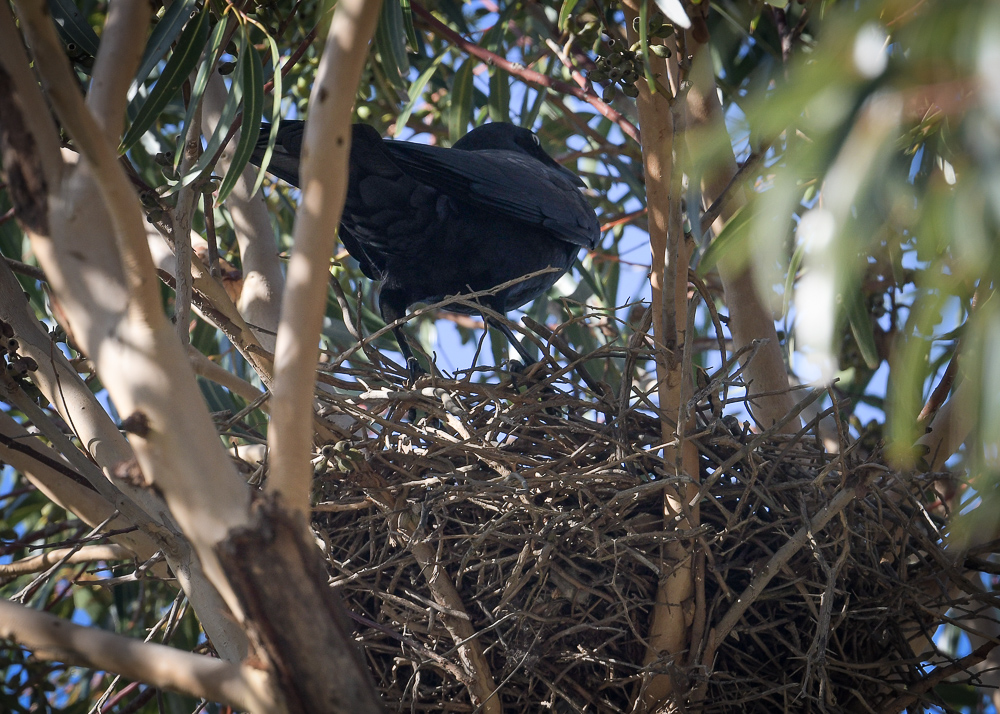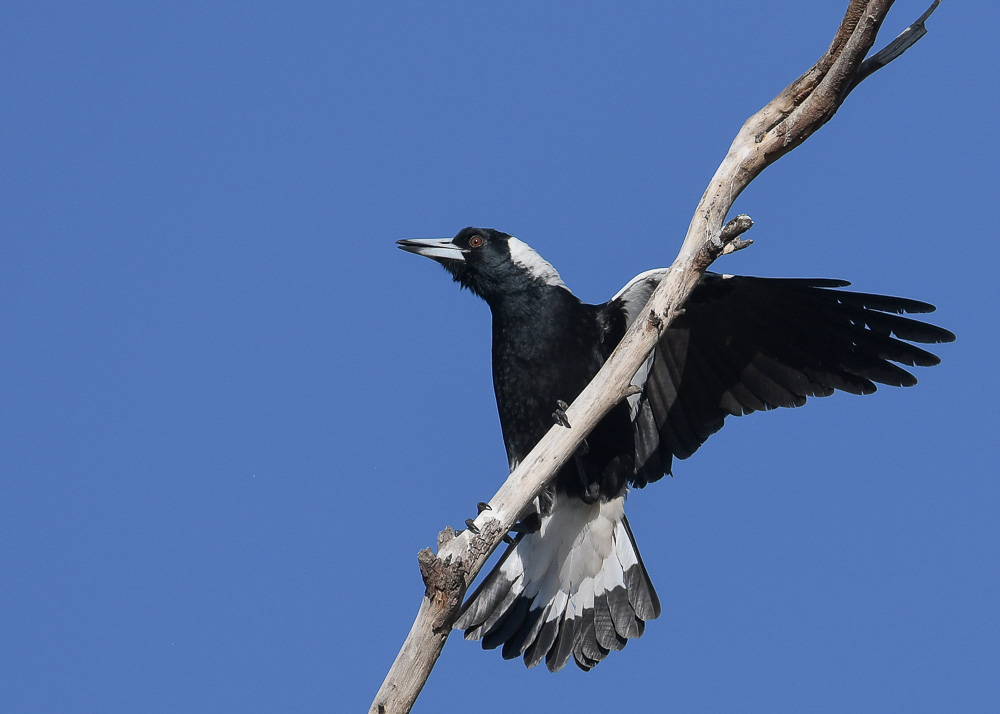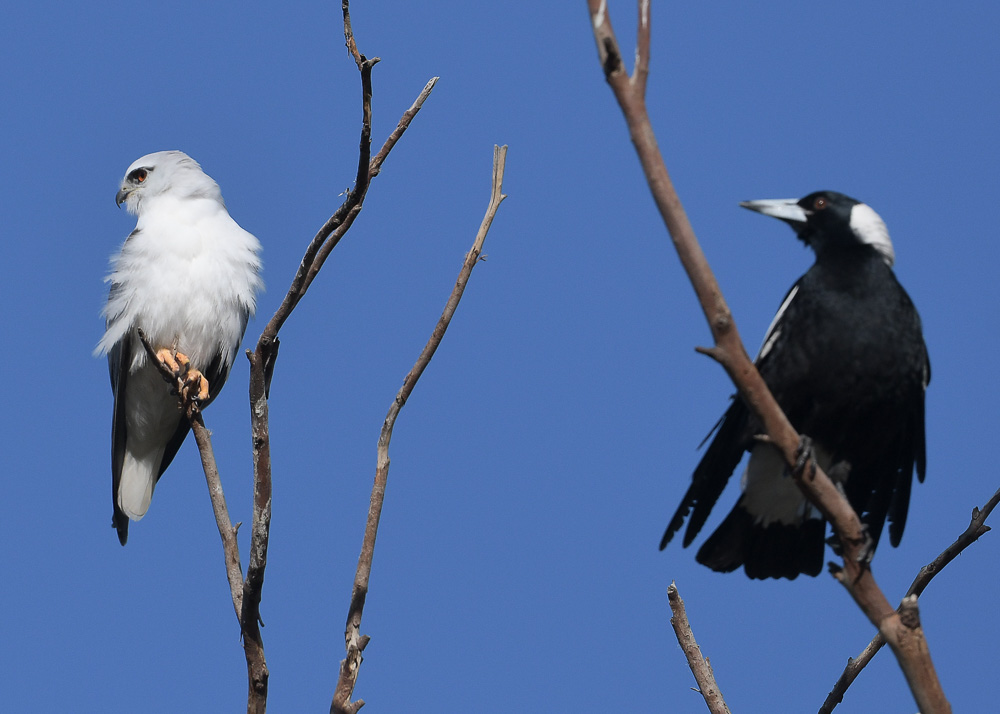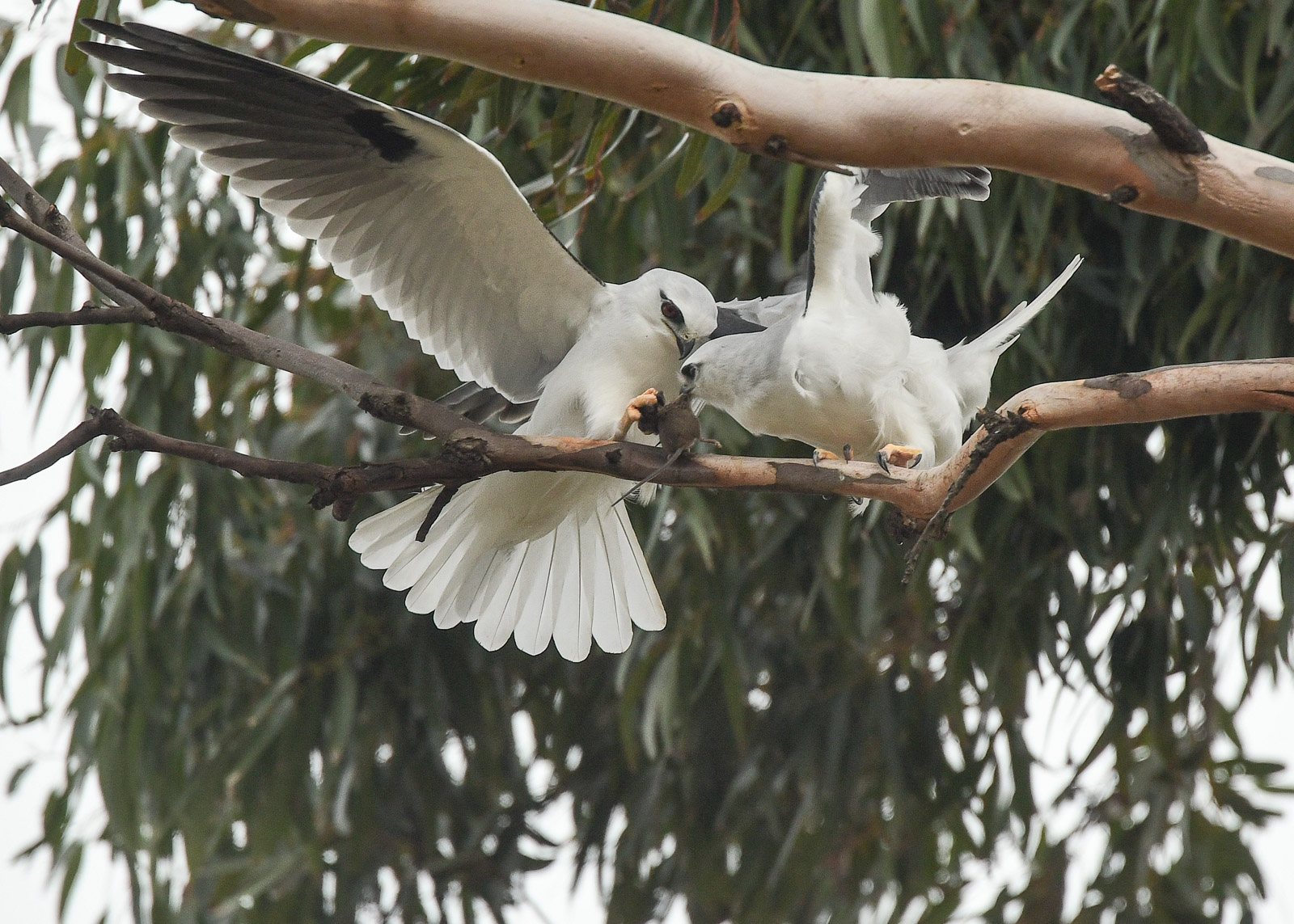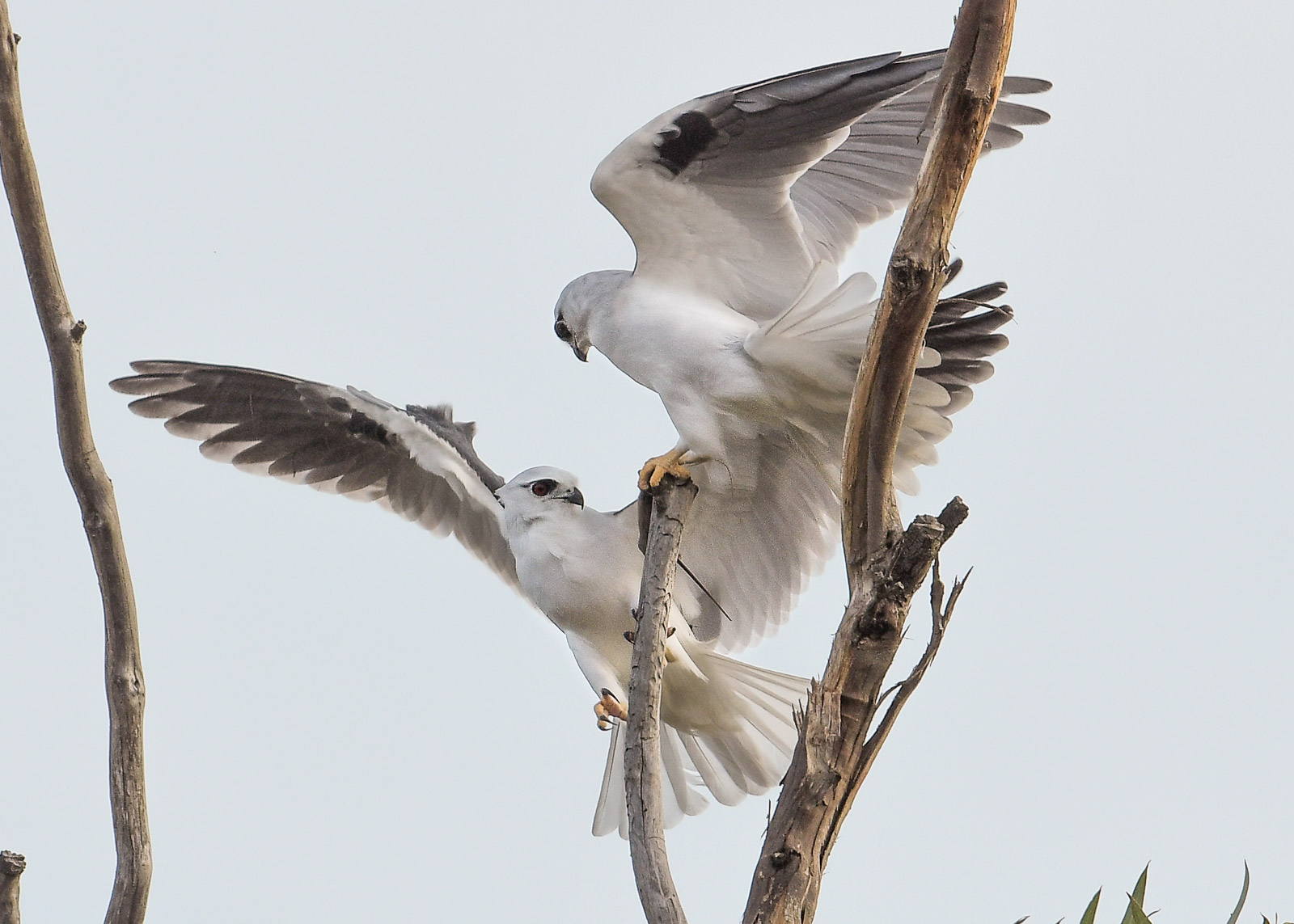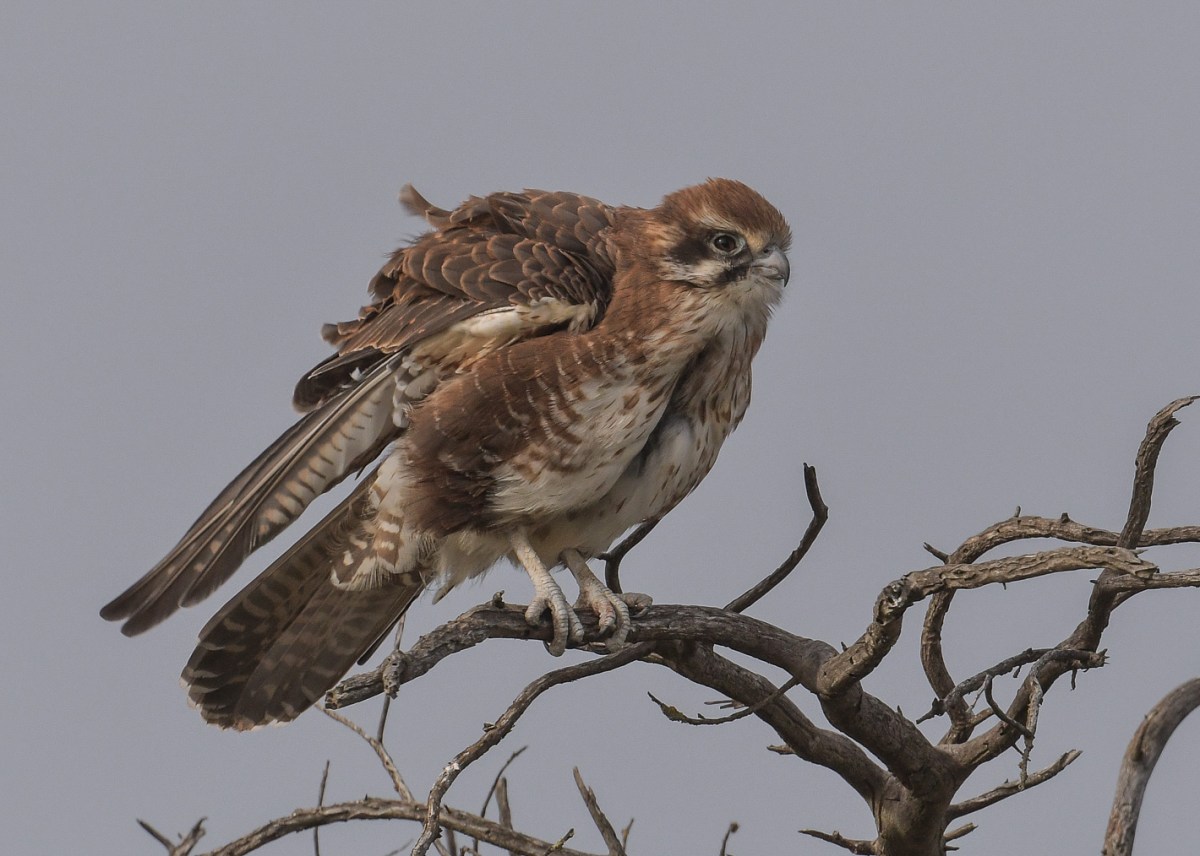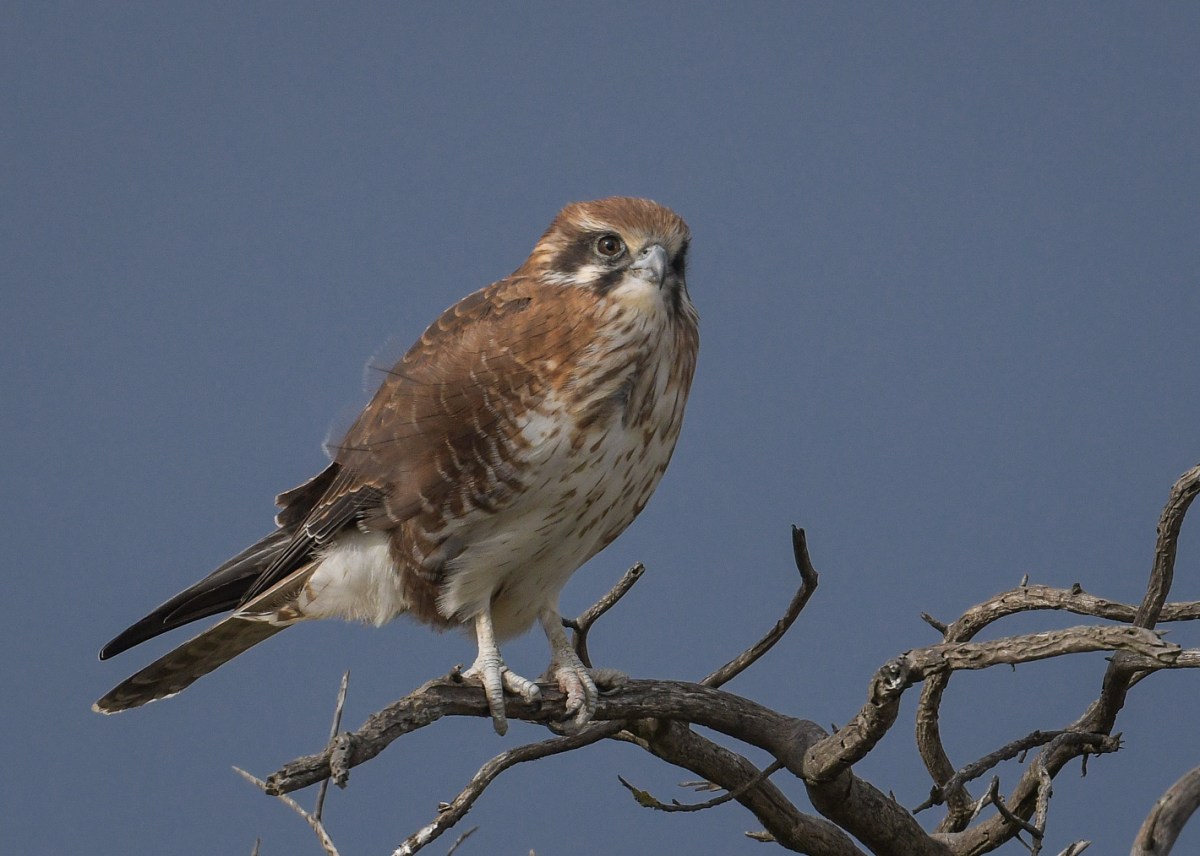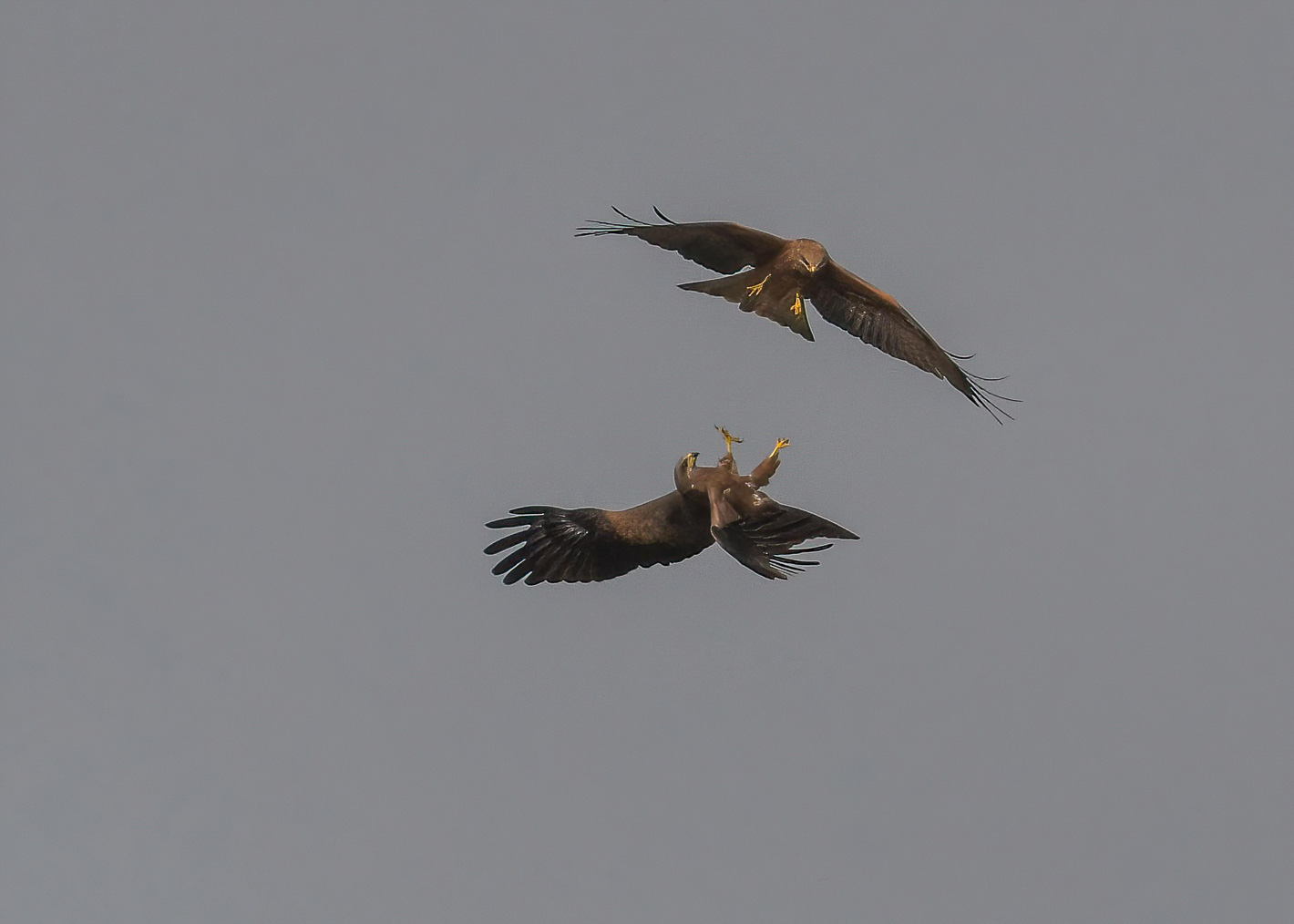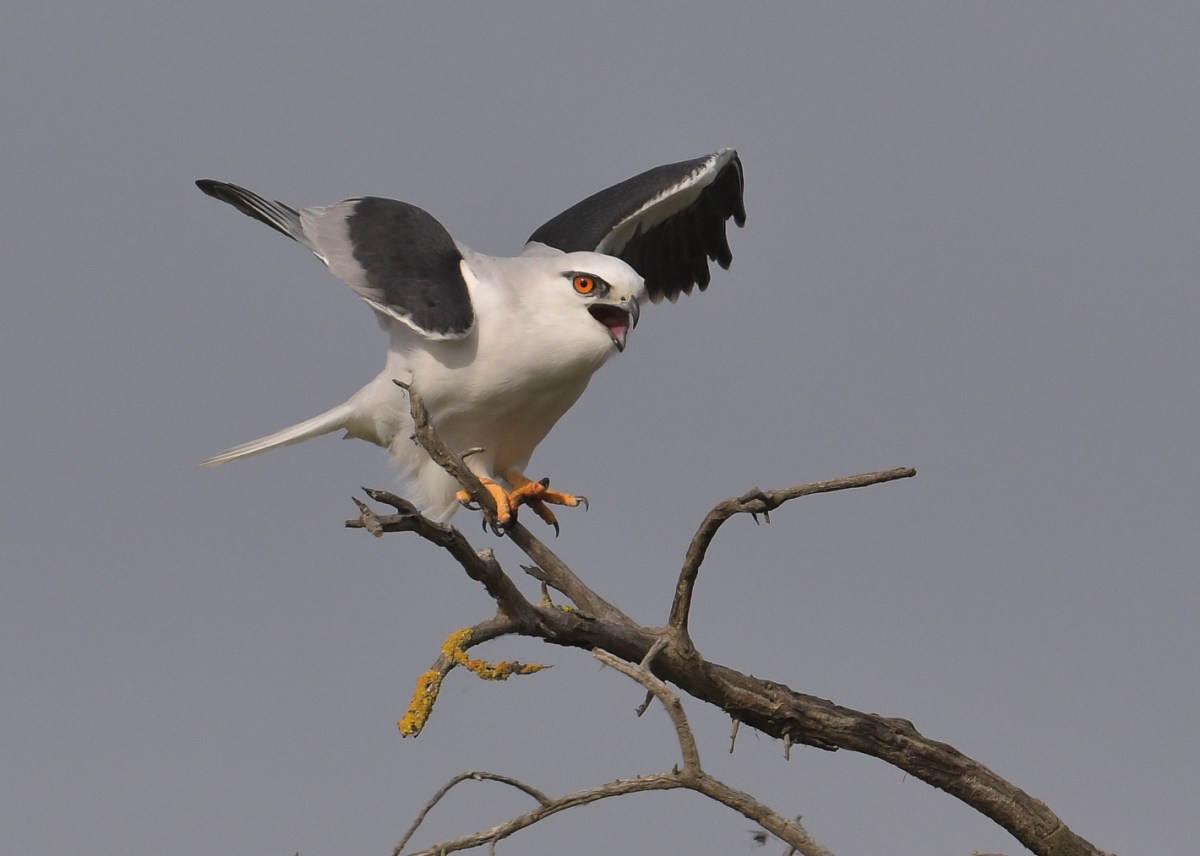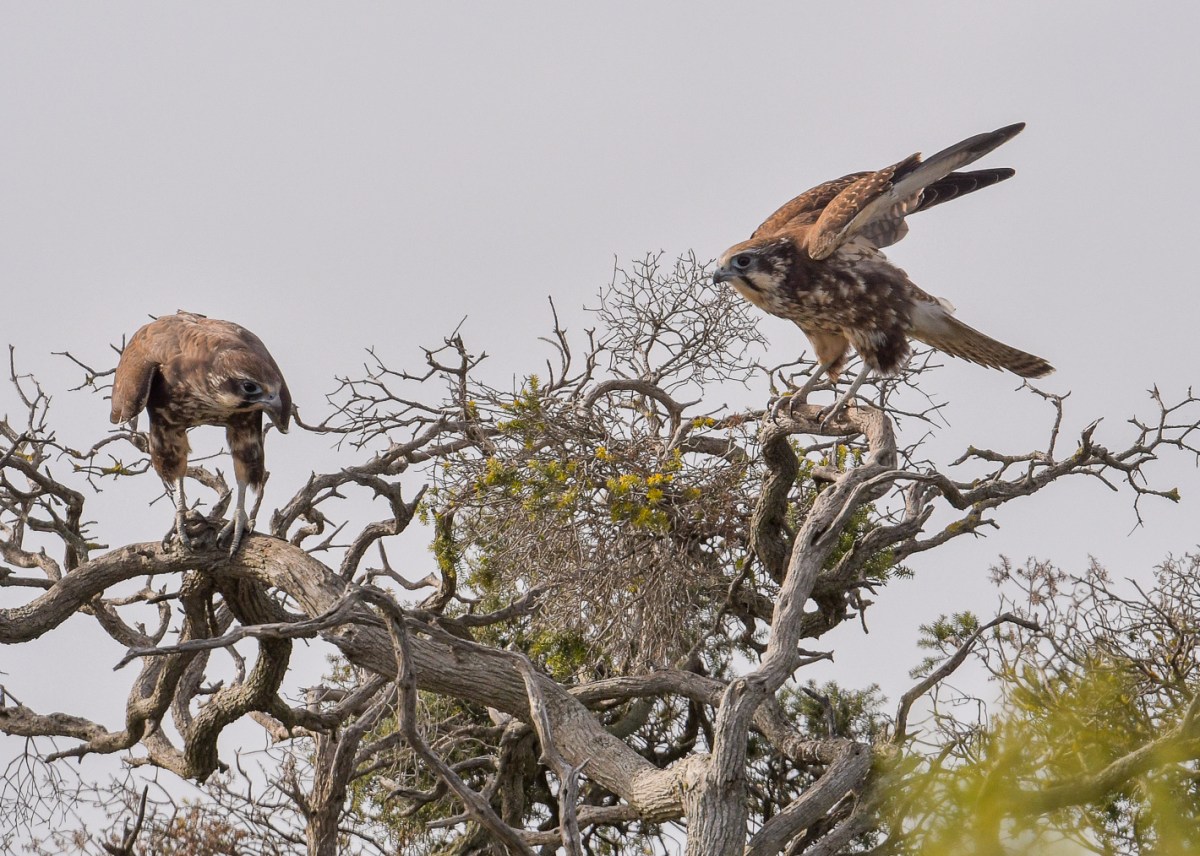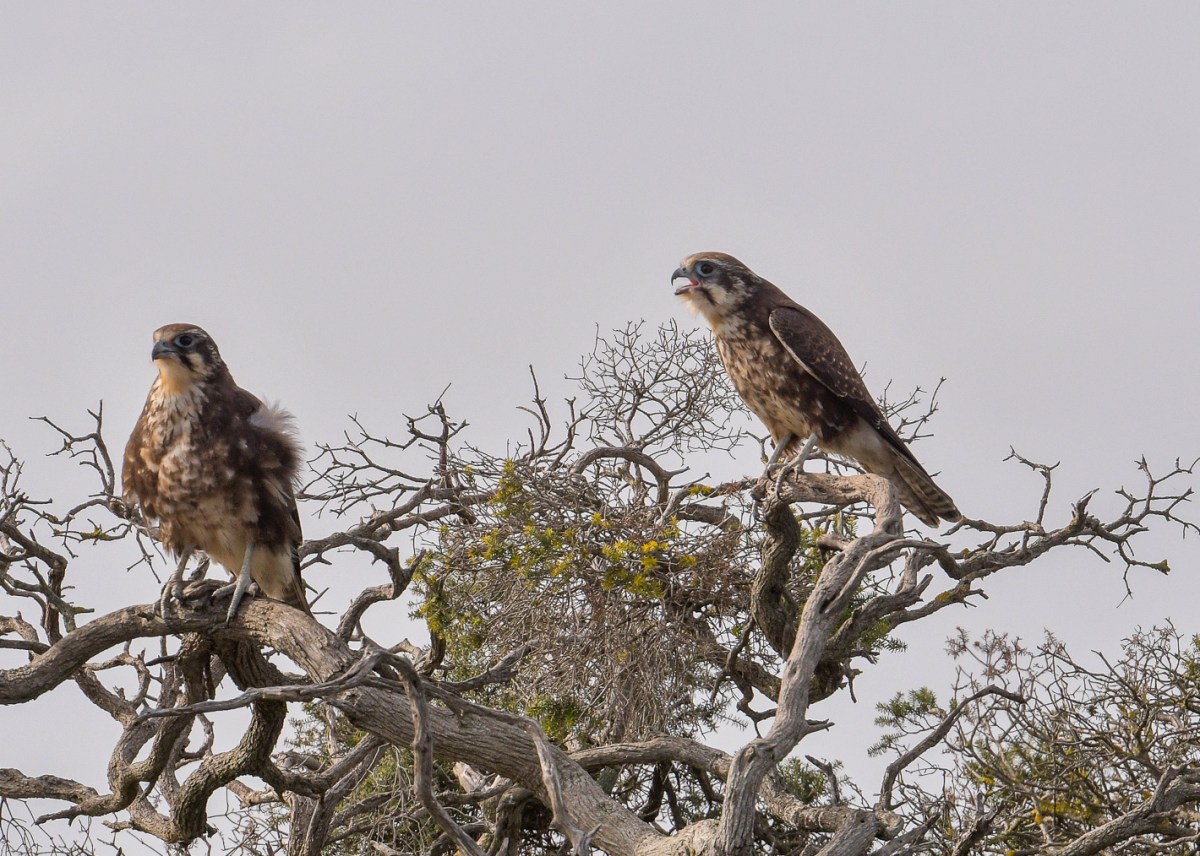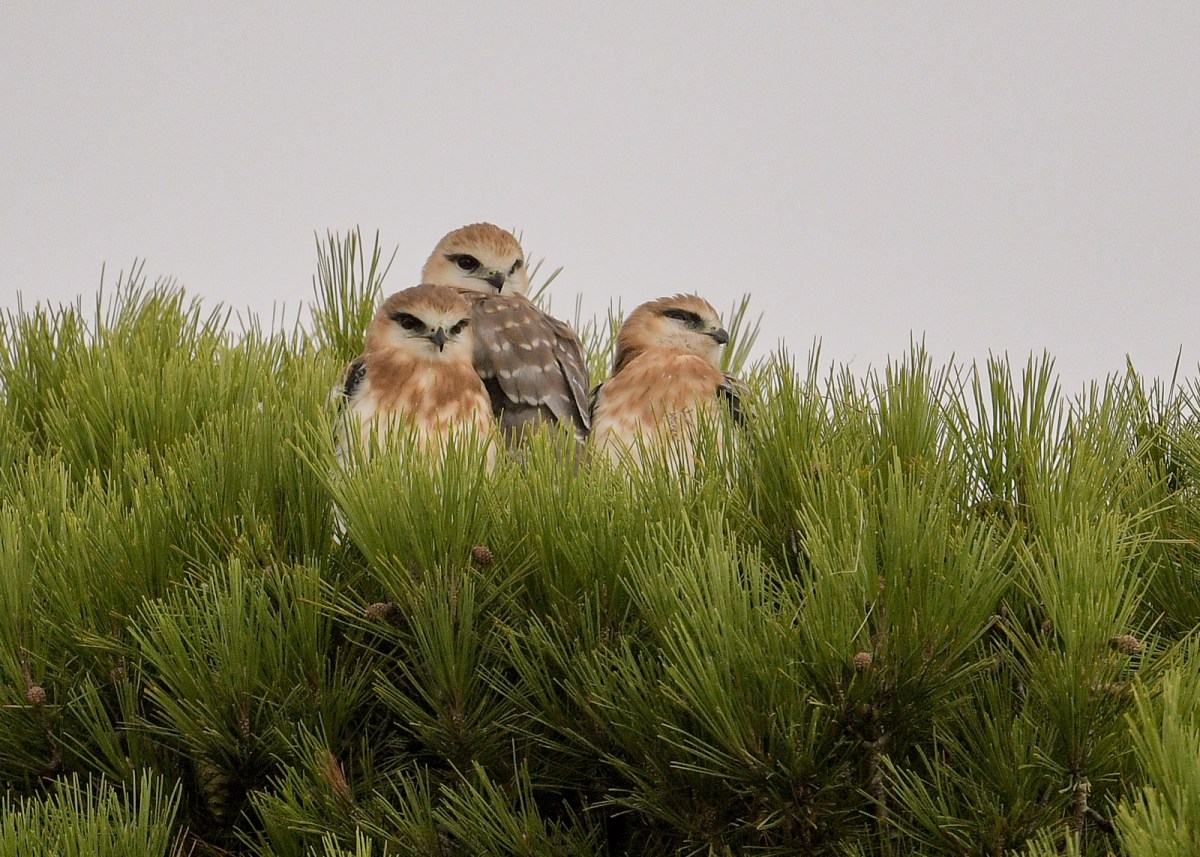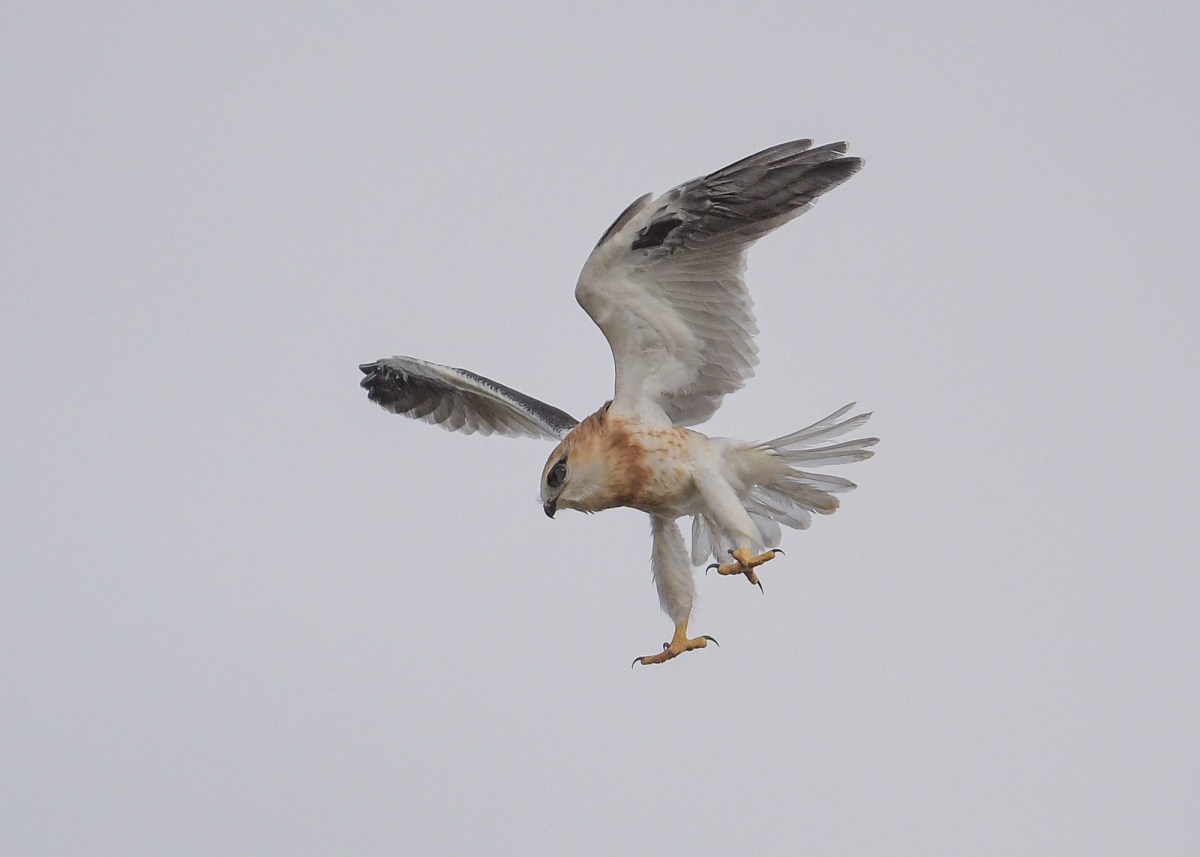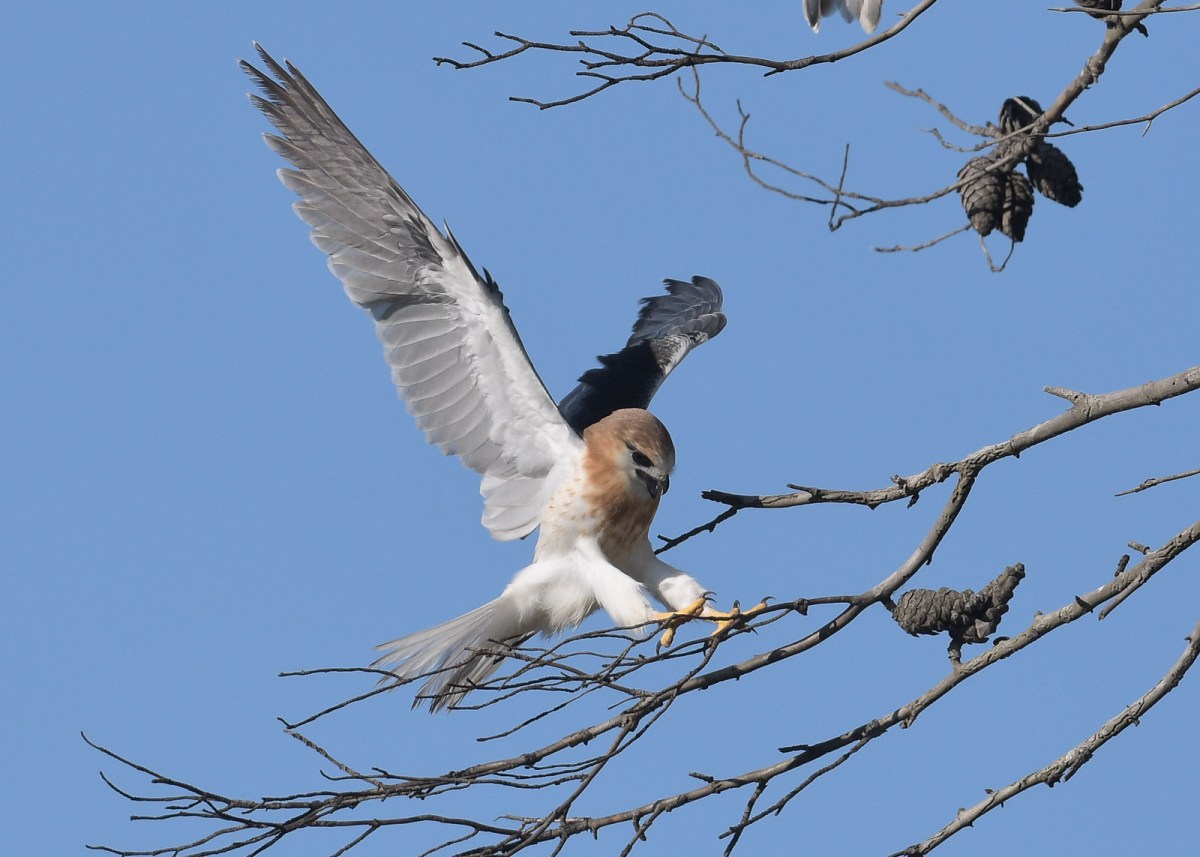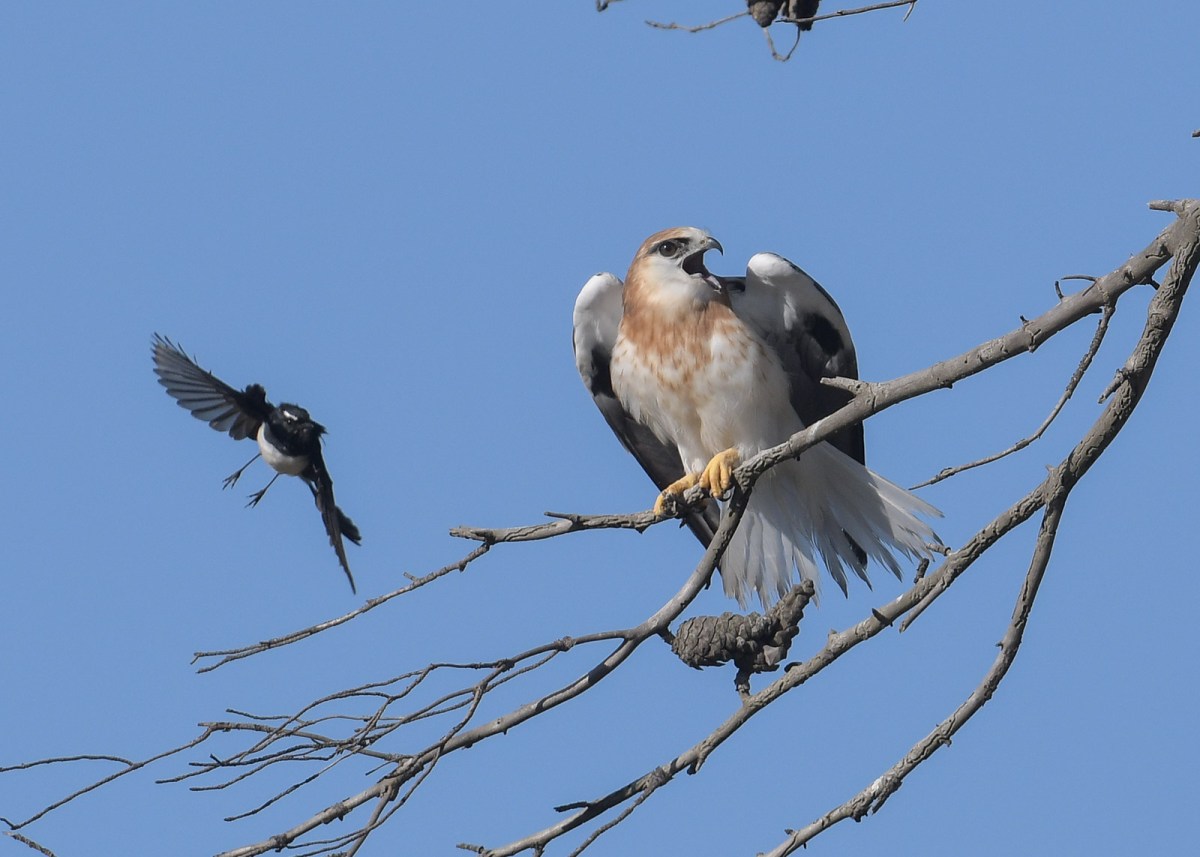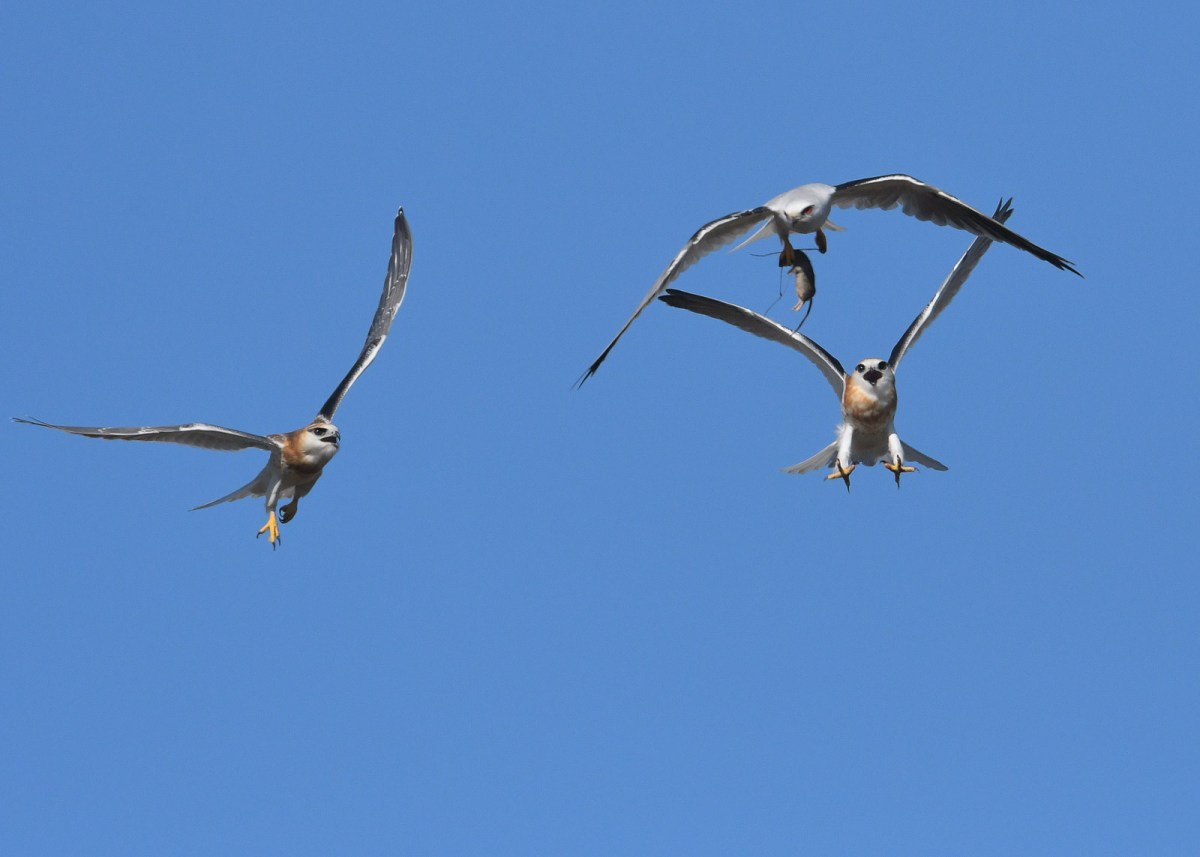As you know, we’ve been following a young pair of Black-shouldered Kites for the past few weeks.
Earlier this year, a number of pairs nested in the same genera area, about the same time. Probably more like a three to four week span.
One pair in what we shall call the ‘home territory’ were in the later shift, and managed to raise and fly two young. At about the same time, the birds from the surrounding areas, moved into the home territory to feed and train their young. With four set of parents and their various offspring the paddocks had as many as 16 birds in the air hunting. Fortunately the mice seemed to have had their own population explosion and there was plenty of food to go round.
But as time went on, as things go with Kites, the young began to disperse and the adults moved on for a well deserved rest. In the end, the home territory male was still in residence, and two young kites that we concluded must be the young from his recent clutch.
Young siblings are happy to sit and hunt together and this couple seemed to be happy with their company. As the days went on, and the young orange feathers began to fade away, it became clear this pair were not moving on at all. And perhaps slowly it became even clearer that they were not siblings, but a young pair. No doubt with all the birds in the feeding frenzy, this pair had made an interesting selection.
Too early yet to know if they will stay and nest, but they certainly seem to have established several roost trees as their own.
Pair bonding with Kites is both a high activity and loud process. We found them practicing the techniques they will need for food exchange should they settle on a clutch. It looks pretty aggressive and serious, but they each seemed to know the part they have to play.
And a little later I found them sitting together on the nearby track, hunting crickets on the ground.
Hopefully there will be more to share of this story.
Enjoy



